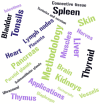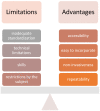Ultrasound Elastography in Children
- PMID: 37628295
- PMCID: PMC10453784
- DOI: 10.3390/children10081296
Ultrasound Elastography in Children
Abstract
Ultrasound elastography is a novel ultrasound technique, being extensively researched in children in the last decade. It measures tissue elasticity with the observation of tissue response after an external stimulus. From research to clinical practice, ultrasound elastography has evolved significantly in liver fibrosis evaluation in children; however, several other applications of the technique are available in both clinical practice and research environments. Practically, in children any organ can be assessed, including the brain in early ages, along with muscle and connective tissue elasticity evaluation, spleen, kidney, skin, lymphatic tissue, etc. The elastography method, age, body mass index and technical points should be considered when performing ultrasound elastography. This review highlights its vast potential as a diagnostic tool in the pediatric population, where ultrasound is a dominant imaging tool; however, the indications and exam protocol for its clinical use in several fields in pediatrics have yet to be elucidated.
Keywords: children; elastography; indications; ultrasound.
Conflict of interest statement
The authors declare no conflict of interest.
Figures



Similar articles
-
Ultrasound Shear Wave Elastography for Liver Disease. A Critical Appraisal of the Many Actors on the Stage.Ultraschall Med. 2016 Feb;37(1):1-5. doi: 10.1055/s-0035-1567037. Epub 2016 Feb 12. Ultraschall Med. 2016. PMID: 26871407
-
Ultrasound Elastography--Review of Techniques and Its Clinical Applications in Pediatrics--Part 2.Adv Clin Exp Med. 2015 Jul-Aug;24(4):725-30. doi: 10.17219/acem/34581. Adv Clin Exp Med. 2015. PMID: 26469119 Review.
-
Liver elastography: what it is, how it is done, and how it is interpreted.Radiologia (Engl Ed). 2018 May-Jun;60(3):183-189. doi: 10.1016/j.rx.2017.11.002. Epub 2017 Dec 13. Radiologia (Engl Ed). 2018. PMID: 29248161 Review. English, Spanish.
-
Ultrasound Elastography Applications in Pediatrics.Ultrasound Q. 2018 Dec;34(4):199-205. doi: 10.1097/RUQ.0000000000000379. Ultrasound Q. 2018. PMID: 30169493 Review.
-
What we need to know when performing and interpreting US elastography.Clin Mol Hepatol. 2016 Sep;22(3):406-414. doi: 10.3350/cmh.2016.0106. Clin Mol Hepatol. 2016. PMID: 27729637 Free PMC article.
Cited by
-
Comment on Shear-wave Elastography of Palatine Tonsils: A Normative Study in Children.J Med Ultrasound. 2024 Mar 21;32(1):89. doi: 10.4103/jmu.jmu_133_23. eCollection 2024 Jan-Mar. J Med Ultrasound. 2024. PMID: 38665354 Free PMC article. No abstract available.
-
The importance of elastography in hepatological diagnostics in children.Clin Exp Hepatol. 2025 Mar;11(1):9-13. doi: 10.5114/ceh.2025.149075. Epub 2025 Mar 31. Clin Exp Hepatol. 2025. PMID: 40303586 Free PMC article. Review.
-
Associations of Ultrasound Findings with Serum Iron and Ferritin Levels in Children with Obesity.Life (Basel). 2024 Apr 7;14(4):484. doi: 10.3390/life14040484. Life (Basel). 2024. PMID: 38672754 Free PMC article.
-
Application of shear wave elastography in the management of thyroid nodules in children and adolescents: our experience and a review of the literature.Front Endocrinol (Lausanne). 2024 Nov 20;15:1486285. doi: 10.3389/fendo.2024.1486285. eCollection 2024. Front Endocrinol (Lausanne). 2024. PMID: 39634183 Free PMC article. Review.
-
Pediatric Perspectives on Liver Cirrhosis: Unravelling Clinical Patterns and Therapeutic Challenges.J Clin Med. 2024 Jul 22;13(14):4275. doi: 10.3390/jcm13144275. J Clin Med. 2024. PMID: 39064318 Free PMC article. Review.
References
Publication types
LinkOut - more resources
Full Text Sources

